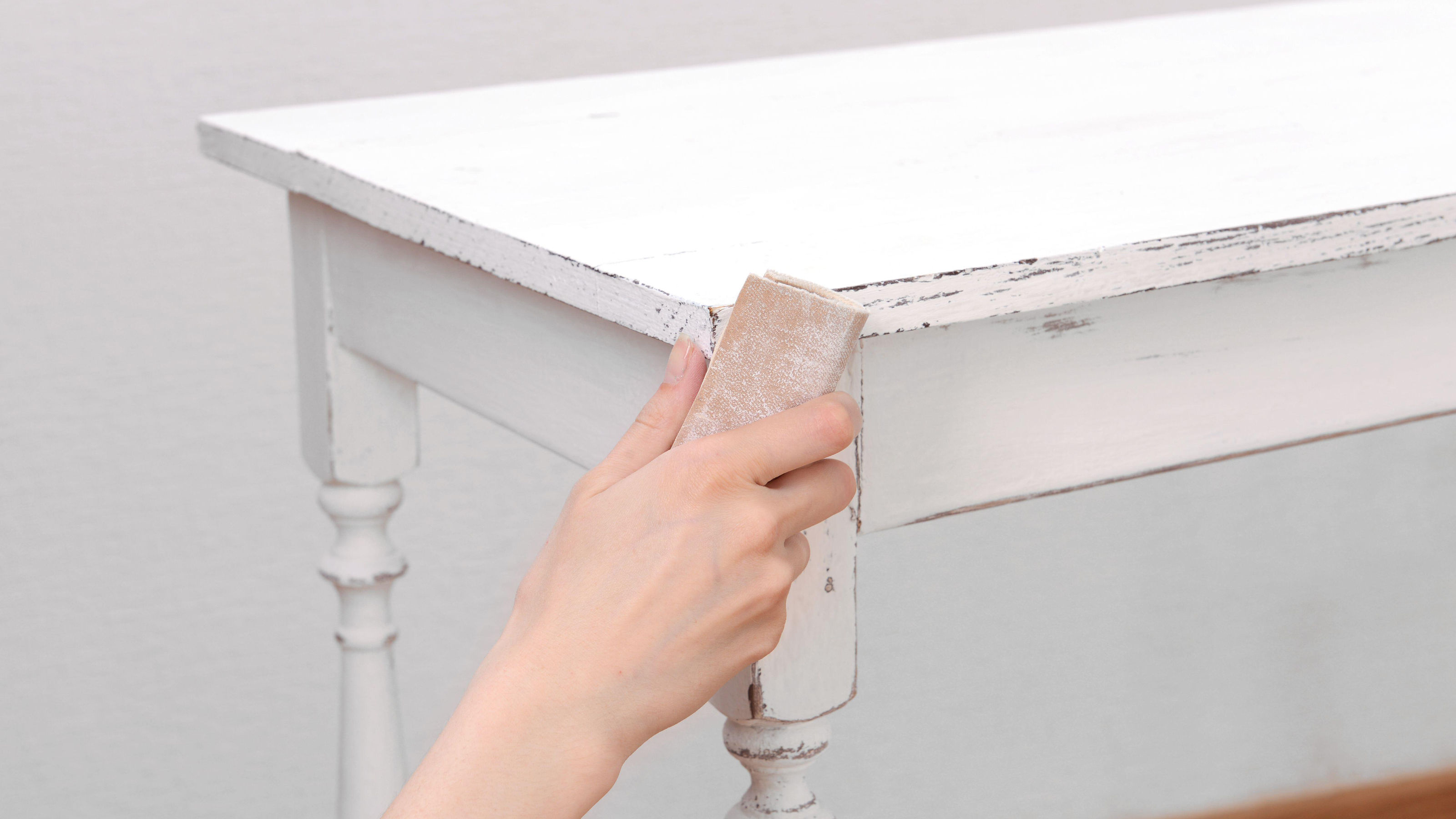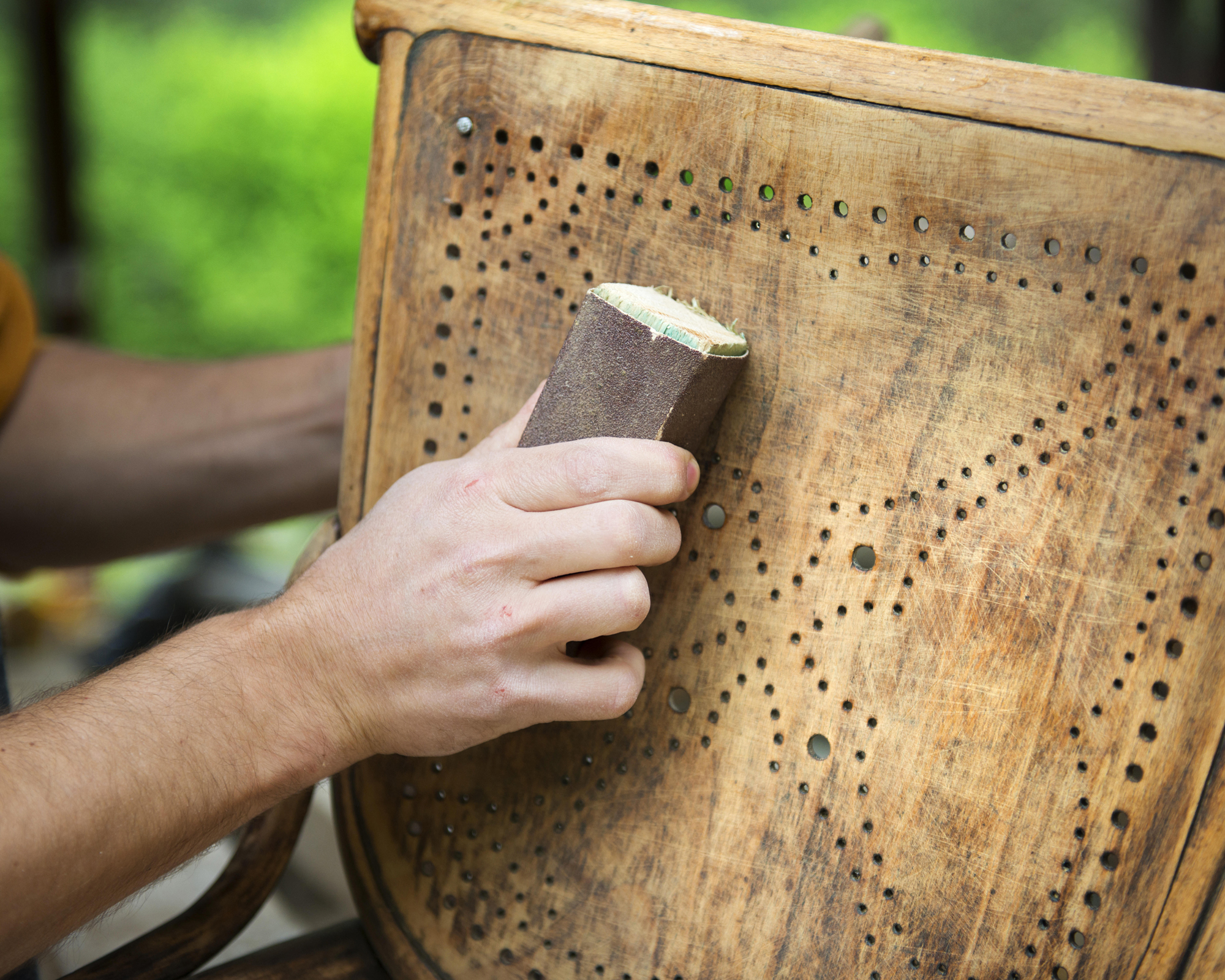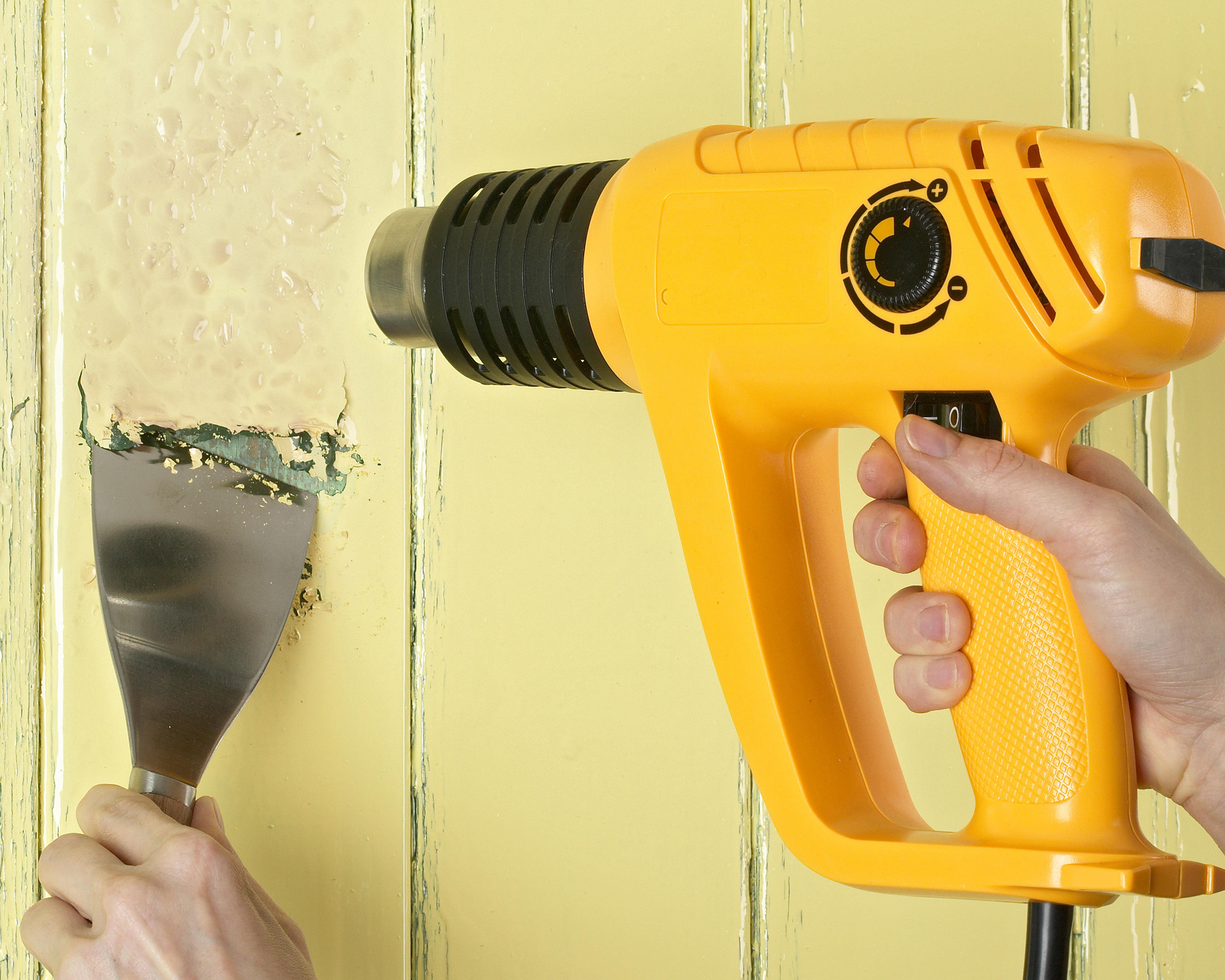How to remove paint from wood
Find out how to remove paint from wood, even if it's old paint

Typically, you'll need to know how to remove paint from wood if you are refinishing or restoring old wooden furniture. Whether you'd like your wooden piece to be left natural or you want to repaint it, you will need to find a way to lift off that old paint – all of it, even if there's not much left.
So, before you reach for the best paint for furniture for your project, make sure you follow professional advice on removing old paint.
How to remove paint from wood: oil vs. water-based paint
You will save yourself a lot of time and potentially wasted effort if you determine what paint you've got on top of your wood before trying to remove it. Most paints used on furniture are either oil-based or water-based, and the two require different agents and techniques when it comes to removal.
Not sure which type of paint you've got? Interior designer and consultant at DIYgeeks.com Tony Adams recommends performing a simple test to find out: 'dip a cotton ball/swap into denatured alcohol, then rub the cotton ball over the painted wood, if the paint comes off then it's water-based paint, if the paint doesn't come off then it's an oil-based paint.'
Alternatively, you can also use the flashlight test: 'Use your phone flashlight and shine into the painted wood, if the surface looks shiny then it's oil-based, if the surface looks dull or doesn't reflect light then it's water-based.'
As a rule of thumb, if you have water-based paint, the following will be effective for removing it:
If you have oil-based paint, try:
Get small space home decor ideas, celeb inspiration, DIY tips and more, straight to your inbox!
The time it takes to remove water-based paint is typically 10-15 minutes; removing oil-based paint is twice as long, so bear that in mind when leaving your chemical of choice to work on the paint.
If you're trying to remove stubborn, old paint that won't come off easily, try one of the following methods, recommended by professionals who've worked with wood and paint.

1. Use a solvent
Your first port of call when trying to remove old paint should always be a solvent. Zack Hall, a woodworker and the operator of SketchUpForWoodworkers.com swears by it from his own experience removing old paint. Plus, 'a solvent will also help remove other layers on top of the paint that are used to protect it, such
as lacquer or polyurethane.'
Hall's hero product for this purpose is Citristrip which you can buy on Amazon. It 'will work on any paint or finish. And because it's thick, you can also easily use this on vertical surfaces.'
'Apply it, wait for it to set, then use a scraper to peel the layers of paint and finish off. Afterwards, I typically wipe with a clean rag and then lightly sand the revealed wood surface.'
2. Test multiple products
Depending on the exact type of paint you've got, you may need to try more than one product, to find the formula that works best for the surface you're working with. Stacy Lewis, the Interior Designer at Eternity Modern, advises testing multiple strippers 'in a small area on that item to see which stripper works the best. Apply the
stripper on the wood using the recommended type of brush. Test the paint
intermittently to see whether it has softened.'
Once you've found the product that works and removed the paint, 'wash the wood with a clean, water-soaked rag, then sand down the entire surface. Wipe and clean the wood again to remove any particles left from sanding.'
If you are restoring an item of furniture that you want to keep natural, Lewis recommends finishing off by applying a furniture polish or liquid beeswax 'by brush or cloth. Leave for six hours and apply more coats as necessary. Once dry, buff with a cotton cloth. And for extra shine, apply wax polish.'
3. Try an oven cleaner
Don't want to buy paint solvent? You may have luck with...one of the best oven cleaners. Brooke Grasley, founder of Restore, Decor And More, cites oven cleaner as a 'favorite' – 'I like this method because it's easy and doesn't require any special tools or supplies. All you need is a can of oven cleaner and a soft brillo pad. Simply spray the oven cleaner on the furniture and let sit for about an hour & 15 minutes. Then, it will wipe right off with a soft, wet brillo pad and a little bit of pressure.'
4. Run wood planks through a planer
If nothing is working and/or you've got a large piece of furniture, for example, a large table, you may be able to get the paint off mechanically – by disassembling your furniture piece and running it through a thickness planer.
A planer is a tool that removes the top layer of a wood board and makes it uniform in thickness. It's used in making cutting boards and other woodworking projects. You can hire one or buy a planer from Amazon. They're not cheap, so buying one only really makes sense if you are seriously into DIY/furniture restoration.
Suzie Wible, the owner of the DIY website and blog The Accent Piece, has removed paint from wood using this method many times – 'most recently, I had a painted tabletop that I disassembled into individual boards and ran each piece
through my planer. This made quick work of removing the wood (much faster
than sanding!)'

5. Try a heat gun
Another alternative to chemicals is a heat gun. Dan Wiener, the Founder & Lead Interior Designer for Homedude, advises testing a heat gun 'on a small
area of the furniture to make sure that it does not damage the wood. If
everything looks good, then you can begin using the heat gun to remove the
paint. Start by heating up the paint until it is soft and then use a
scraper or putty knife to scrape it off. Be careful not to damage the wood
while scraping.'
Will paint thinner ruin wood?
In most cases, no, as long as you use the product as directed. Damage to wood from paint strippers or thinners usually happens because too much of the product was applied, or the product was left on too long. Wiener also cautions that when removing paint from wood 'it's important to use a product that is specifically designed for this purpose' – so, it has to explicitly say it's sage to use on wood. 'It is important to follow the manufacturer's instructions carefully, as using too much or using the wrong chemical product can damage the surface.'
Anna is a professional writer with many years of experience. She has a passion for contemporary home decor and gardening. She covers a range of topics, from practical advice to interior and garden design.